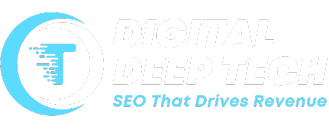Why Search Engine Optimization Is the Long Game You Can’t Afford to Ignore
The myth of quick SEO wins is dangerous. Many business owners jump into search engine optimization expecting instant rankings, viral traffic spikes, and overnight sales. But the reality?

Review by Deepak Sharma
SEO Specialist
May 20, 2025 | 6 min. read

Table of the content
- 1. Understanding the SEO Long Game
- 2. The Compounding Power of SEO
- 3. Key Benefits of a Long-Term SEO Strategy
- 4. Core Components of a Successful Long-Term SEO Strategy
- 5. Common Misconceptions and Challenges
- 6. Case Studies and Real-World Examples
- 7. Actionable Steps to Start (or Refocus) Your SEO Long Game
- Conclusion
SEO isn’t some lucky break or overnight jackpot.
It’s more like tending to a garden—you water it, give it sunlight, and wait patiently. It takes effort, and you don’t always see results right away. That’s where most businesses lose hope. They expect quick wins, and when that doesn’t happen, they assume it’s not working.
What many people miss is that SEO isn’t just about getting more clicks. It’s about building something solid—your presence, your credibility, your place on the internet. Over time, with enough care and consistency, it starts to work on its own. And when it does, it doesn’t just bring traffic—it drives real, lasting growth.
The truth is, SEO is a compounding, long-term growth channel. When done right, it builds lasting brand authority, organic visibility, and business results you can’t buy overnight. The effort you invest today will continue to bring returns months and even years down the line.
1. Understanding the SEO Long Game
What Does Long-Term SEO Really Mean?
Long-term SEO is all about showing up—consistently. It’s not about chasing quick wins or trying to go viral overnight. Instead, it’s a steady process of improving your website, your content, and your overall presence so that, over time, you earn more trust from search engines and your audience.
Shortcuts like keyword stuffing or buying sketchy backlinks might get you a temporary spike in traffic—but they usually don’t last. Google’s smarter than that. The focus now is on websites that offer real value: content that helps, pages that load fast, and brands that feel legitimate.
At its core, SEO today is about experience, trust, and relevance. It’s all about E-E-A-T (Experience, Expertise, Authoritativeness, and Trustworthiness), helpful content, technical hygiene, and strategic intent. It’s not just about keywords, but about providing genuine solutions to users. This evolution reflects how search engines now prioritize human-first content and usability.
Why Quick Fixes Fail
Treating SEO like a one-off campaign is a recipe for disappointment. You can’t just publish a few blog posts and expect Google to fall in love with your site. SEO rewards consistency, structure, and reliability—not one-time efforts.
With regular updates like Google Helpful Content and Core Web Vitals, the algorithm penalizes gimmicks and rewards genuine effort. Search engines are smart enough to distinguish between manipulative practices and true value-driven content. What might have worked five years ago is now considered risky.
2. The Compounding Power of SEO
SEO as a Compounding Asset
Think of SEO like investing in a retirement fund. You contribute regularly, and over time, your assets grow—not just from your deposits, but from the interest earned. That’s the compounding effect that drives exponential returns when managed wisely.
Similarly, when you consistently publish helpful, well-optimized content, your site gains authority. It starts ranking for more keywords. Backlinks grow. Traffic increases. It’s not instant, but once it kicks in, things start to pick up—faster than you’d expect.
The beauty of SEO is that it gets better with age. The more you invest, the more it grows, almost like it’s working in the background while you focus on everything else. The more consistent your efforts, the stronger your compounding returns. This is why so many successful brands invest in building a content library that continues to perform month after month.
Longevity of Content
Unlike ads that disappear when the budget runs out, great SEO content keeps working. A well-optimized blog post can generate traffic for years. It continues to bring value long after its initial publication.
Studies show that the average age of top-ranking content is over two years. That means your efforts today are still bringing in leads long after publication. That kind of return doesn’t come from just any marketing channel—it’s something SEO does really well.
And that’s exactly why so many established brands stick with it. They team up with a trusted SEO comapny in India to build a steady stream of content that keeps delivering. With the right partner, your content doesn’t just work once—it keeps adding value long after it’s published.
3. Key Benefits of a Long-Term SEO Strategy
Sustained Organic Traffic Growth
Google holds nearly 92% of the global search engine market. Let’s face it—when people search on Google, they rarely scroll past the first few results. In fact, Google dominates the search game, and landing that top spot can get you nearly a third of all clicks. The difference between being #1 and even #3 is huge—and it directly affects how many people find you.
As your content starts to rank higher, your visibility doesn’t just grow—it multiplies. Every blog post, FAQ, or landing page you add becomes another way for someone to discover your brand. And over time, all those pieces start working together to boost your presence even more.
That’s the power of momentum. SEO builds on itself. The more consistent you are, the easier it gets to stay visible—and stay ahead.
Building Brand Authority and Trust
People trust Google. So if your business keeps showing up there, that trust starts to rub off on you. It tells people you know what you’re doing, that your brand is relevant, and that you’re worth paying attention to.
When you consistently put out helpful, well-written content, you’re not just chasing rankings—you’re building a reputation. And when other credible sites link back to you? That’s like getting a public endorsement. It takes time to earn that kind of trust, but once you have it, it opens doors.
Enhanced User Experience
Google doesn’t just look at keywords. It evaluates how your website performs: Is it fast? Mobile-friendly? Easy to navigate? These factors play a huge role in rankings and overall user satisfaction.
Good SEO isn’t just about search engines—it’s about real people. If your site loads quickly, is easy to navigate, feels secure, and actually offers something useful, people are more likely to stick around—and take action.
Google notices that. In fact, user experience has become a major part of how it ranks websites. The better your site feels for visitors, the better it performs in search. These days, SEO and user experience go hand in hand. You really can’t have one without the other.
Cost-Effectiveness and ROI
Paid ads stop delivering once the campaign ends. But SEO, when done right, keeps giving. Your content keeps ranking, your traffic continues, and your authority grows without additional spend.
Organic traffic might take a little more time and money upfront, but over the long run, it’s way more cost-effective than constantly running ads. Once your content starts ranking, it keeps working—without needing a daily budget. That’s what makes SEO such a smart investment for long-term visibility.
4. Core Components of a Successful Long-Term SEO Strategy
Technical Foundations
A strong website is the backbone of effective SEO. That means clean code, fast loading speeds, mobile responsiveness, and structured data. These are the building blocks that support long-term rankings.
Search engines must be able to crawl and index your site easily. If they can’t, your content won’t show up—no matter how good it is. Technical SEO ensures that your efforts don’t go to waste.
Getting the basics right from the start allows your future content and link-building efforts to flourish. It’s the foundation every SEO strategy should be built upon.
Content Strategy Driven by Search Intent
You must create content that answers real questions. What are users typing into search? What do they really want to know? Search intent is the bridge between keywords and conversions.
This is where things like keyword research, checking out what your competitors are doing, and really understanding what your audience is looking for come into play. It’s not just about what you want to say—it’s about what people actually want to find. A good mix of evergreen content that stays relevant and timely posts that tap into current conversations is key.
Internal and External Linking
Strong internal linking is like giving Google a guided tour of your website. When you connect your top-performing pages to newer or deeper ones, it helps search engines find and understand your content better—and boosts the visibility of those lesser-known pages.
On the outside, backlinks from trusted websites are like votes of confidence. When reputable sites link to yours, it tells Google your content is worth trusting. And that trust can seriously boost your rankings.
Together, internal and external links do more than just drive traffic—they help build a solid, connected presence online that search engines (and people) take seriously.
Consistent Performance Tracking and Optimization
SEO isn’t “set and forget.” You need to monitor performance regularly—rankings, traffic, bounce rates, conversions—and adjust accordingly. SEO is dynamic, not static.
Google’s algorithms change. Your competitors improve. You need to keep evolving. Continuous improvement is what keeps your SEO strategy future-proof and effective over time.
Staying updated with performance metrics helps identify what’s working and what needs refining. This ongoing feedback loop is what separates successful SEO strategies from short-lived attempts.
5. Common Misconceptions and Challenges
Impatience and Unrealistic Expectations
A lot of businesses pull the plug on SEO way too early. It’s totally understandable—waiting months to see real progress isn’t easy, especially when you’re used to instant results from ads or social media. But that’s just not how SEO works.
Think of it like planting a tree. You don’t get shade the next day. But give it time, water it regularly, and soon enough, it starts growing strong and steady. The longer it stands, the more value it brings.
The key? Set clear expectations from the start, and commit to the process. With consistent effort and the right strategy, the payoff is more than worth the patience.
Chasing Trends Instead of Building Foundations
It’s tempting to jump on the latest marketing trend—viral TikTok videos, influencer collabs, or AI-generated everything. But these trends fade. Foundational SEO doesn’t.
Building a fast, well-structured website and creating helpful, evergreen content may not be flashy, but it’s what stands the test of time. It creates a digital presence that lasts and evolves with your business.
6. Case Studies and Real-World Examples
Brands That Won with Long-Term SEO
Consider HubSpot. They started as a small blog but committed to high-quality inbound content over the years. Today, they dominate thousands of keywords and generate millions in organic traffic. Their SEO investment has turned into a competitive moat.
Or take Neil Patel, whose consistent investment in long-form, in-depth content built him into an SEO authority. These examples prove that compounding content is a winning formula. It shows that slow and steady truly wins the race.
These brands didn’t win by chasing quick wins. They won by staying consistent, listening to their audience, and trusting the process.
Lessons from Failed Short-Term Approaches
On the flip side, countless websites built on spammy links and keyword stuffing disappeared after Google’s Penguin update. Businesses that tried to game the system paid a heavy price in lost rankings and credibility.
Shortcuts might give you a quick boost, but they rarely hold up. Sooner or later, search engines catch on—and when they do, it can take months (or even years) to bounce back. The damage sticks.
7. Actionable Steps to Start (or Refocus) Your SEO Long Game
Audit Your Current SEO Position
Start with a complete SEO audit: Is your site mobile-friendly? Do your pages load quickly? Are your meta tags optimized? What does your backlink profile look like?
Free tools like Google Search Console and paid platforms like Ahrefs or SEMrush can help, or you can consult for a professional audit. A clear baseline will help you measure growth and improvement.
This audit is your roadmap. It tells you where you are, where the gaps are, and what needs to be fixed first. Don’t skip this step.
Develop a Content Roadmap
Create a publishing plan. Focus on content that addresses your audience’s top questions and problems. Prioritize evergreen content that compounds over time.
Update old posts regularly and look for opportunities to expand or combine thin content. Refreshing old content can often deliver quick wins in visibility and engagement.
A content calendar ensures that you are not just producing content, but producing the right content with a purpose.
Commit to Consistency and Patience
Make SEO part of your culture, not just a quarterly experiment. Align your content calendar, marketing, and tech team around a shared SEO vision. Everyone on your team should understand its importance.
When your entire organization respects the long game, that’s when you start to win it. You move from sporadic success to sustained dominance.
The sooner you commit, the sooner the results will follow. The key is to start—and stay the course.
Ready to Build Something That Lasts?
We’ll help you lay the right foundation, create content that works, and build a search presence that keeps growing—month after month.
Conclusion
SEO isn’t a sprint. It’s a marathon. And like any worthwhile marathon, it rewards patience, consistency, and smart strategy.
With compounding growth, brand authority, and unbeatable ROI, SEO remains one of the most powerful marketing tools available. But only if you treat it as the long game it is. The earlier you start, the more ground you cover.
So don’t wait for instant results. Start laying your SEO foundation today. Because the sooner you plant the seeds, the sooner your future harvest begins.

Sayantan Maitra is a SEO specialist. He has been working in Pixel Street, the leading Digital Marketing Agency in Kolkata. He has over 2.6 years of experience in the Digital Marketing industry and has worked in different sectors like Travel, Fashion & Jewellery, Logistics & Transportation, Pharmaceutical and Tech. He specializes in SEO to drive organic traffic and build strong brand visibility to rank on the top of the google SERP




